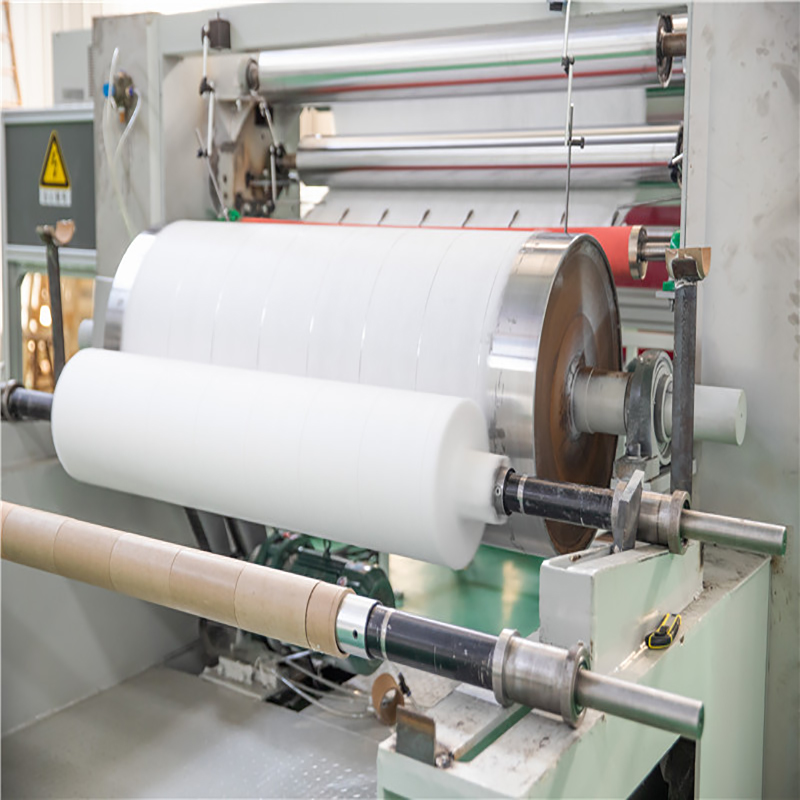Non-woven fabric, by non woven equipment through spunbonded nonwovens production line, is a type of textile material. Actually, it is made from fibers or filaments. And they are bonded together through various mechanical, thermal, or chemical processes. All process through the meltblown make machine. Unlike traditional woven or knitted fabrics, non-woven fabrics are made from fibers that are not interlaced with one another, but rather are bonded together to form a cohesive material.
Want to know about one of the key advantages of non-woven fabrics from equipo no tejido? They can be engineered to possess a wide range of properties and characteristics. Depending on the specific application for which they are intended. For example, non-woven fabrics can be designed to be highly absorbent, water-resistant, or flame-retardant, among other properties.

Meltblown Non-woven Fabric’s Applications
Meltblown non woven fabric from meltblown make machine, is a non-woven material produced by a special melt-blown process. The process involves melting a thermoplastic polymer and extruding it through tiny nozzles to create fine fibers. Then fibers are cooled and collected on a conveyor belt or drum. In meantime, Some of the most common applications of meltblown non-woven fabric include:
- Filtración: Meltblown non-woven fabric by non woven equipment is widely used as a filtration medium. Because its ability to trap and hold particles of various sizes. This makes it ideal for use in air and water filters, as well as in medical masks and other personal protective equipment.
- Oil absorbent pads: Meltblown non-woven fabric is also used in oil absorbent pads and mats, which are used to clean up oil spills and other types of hazardous materials.
- Insulation: Meltblown non-woven fabric can be used as a thermal insulation material. Due to its ability to trap air and create a barrier against heat transfer.
- Wiping materials: Meltblown non-woven fabric is also used as a wiping material in various industrial and household applications. Due to its softness, absorbencia, and ability to trap dirt and other particles.
- Absorbent materials: Meltblown non-woven fabric can be engineered to be highly absorbent. Making it ideal for use in hygiene products such as baby diapers, productos de higiene femenina, and incontinence pads.
Difference Between Meltblown & Spunbonded Non-woven Fabric
Meltblown and spunbonded non-woven fabrics are two of the most commonly used types of non-woven materials in a range of applications. While both materials share some similarities, there are also some key differences between them.
Production process for spunbonded and meltblown:
The main difference between meltblown and spunbonded non-woven fabrics is their production process. Meltblown non-woven fabric is produced by melting a thermoplastic polymer and extruding it through tiny nozzles to create fine fibers, which are then collected on a conveyor belt or drum. Spunbonded non-woven fabric, on the other hand, is produced by spinning thermoplastic fibers into a web or mat, which is then bonded using various methods such as heat, pressure, or chemical processes.
Spunbonded and meltblown fabrics as strength and durability:
Spunbonded non-woven fabric is generally considered to be stronger and more durable than meltblown non-woven fabric. Due to its thicker fibers and more tightly bonded structure. This makes it ideal for use in applications where strength and durability are important. Such as in geotextiles and furniture.
Fiber diameter of spunbonded & meltblown fabrics:
Another major difference between meltblown and spunbond nonwovens is their fiber diameter. Meltblown fibers are finer and finer than spunbond fibers, with an average diameter of approximately 2-5 micrones, while spunbond fibers have an average diameter of approximately 15-30 micrones. This finer fiber diameter gives meltblown nonwovens unique properties. these properties include high filtration efficiency and the ability to capture and retain small particles.
By Spunbonded Nonwovens Production Line Is So Important
The future outlook for non-woven fabric manufacturing by línea de producción de telas no tejidas hiladas is promising. Non-woven fabric is becoming an increasingly popular choice for a wide range of applications. Due to its unique properties and versatility. As a result, the demand for non-woven fabric is expected to continue to grow in the coming years.
One of the key drivers of growth in the non-woven fabric market is the increasing demand for hygiene products. Such as diapers and feminine hygiene products, as well as medical supplies, such as surgical gowns and masks. Spunbonded non-woven fabric is well-suited for use in these applications. Due to its strength and durability, as well as its ability to be customized for specific needs.
